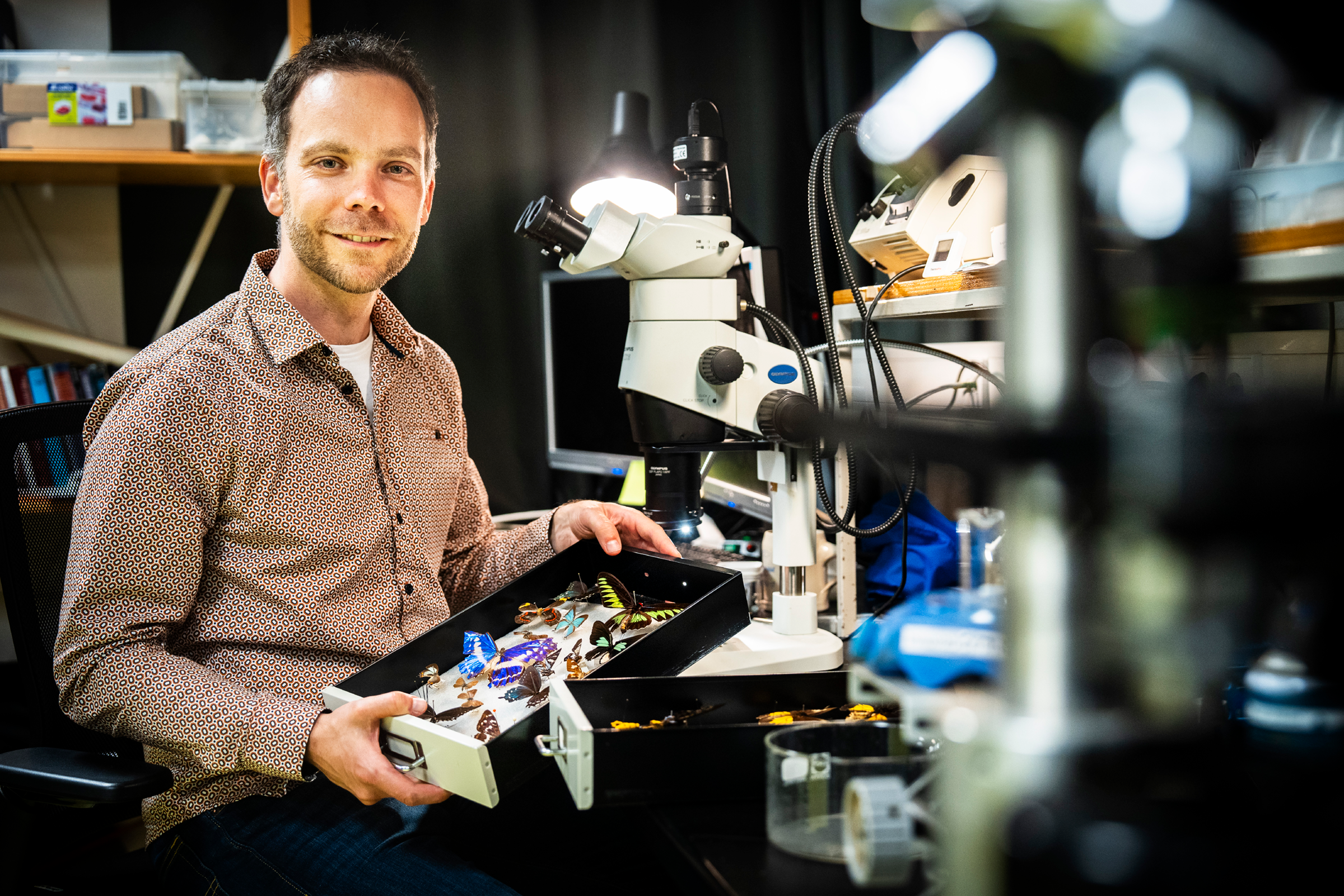‘Flowers Adapt Evolutionarily to Their Pollinators’
Plants need pollinators for reproduction, and they attract these pollinators with colourful flowers. Casper van der Kooi, an evolutionary biophysicist at the University of Groningen, studies how these colours form and evolve.
Lees dit interview in het Nederlands (NewScientist)
‘The colour and brightness of flowers change through evolution to be optimally visible to the pollinator,’ says Van der Kooi. Not all pollinators can see all colours equally well. Many insects, for example, cannot see red. As a result, flowers that rely on insects for pollination are rarely red. Many red flowers rely on birds, which can see red well, for their pollination. ‘The poppy is an exception, but it “cheats” because it also reflects ultraviolet,’ explains Van der Kooi. ‘Insects can see that very well.’
Van der Kooi showed that the colour of a flower is not only determined by its pigment, but that the internal structure of the flower is equally important. ‘A yellow flower, for example, has a pigment that absorbs blue light and reflects the rest,’ he says. ‘As a result, we see the remainder of the spectrum as yellow. But the way in which the flower reflects that remaining light is also important. A flower consists of several layers of cells, which scatter light in different ways. I study how this cell structure leads to the visual signal that animals and humans see.’ An example of a flower with an exceptional structure is the buttercup. ‘It has an outer layer that makes it very shiny.’
Lately, Van der Kooi has also been focusing on butterflies. He studies how the colours of their wings form and evolve to best attract a mate. ‘What makes butterflies so fascinating is that they have the most brilliant colours found in nature. They are also very dynamic – they fly around each other, continuously reflecting light in different ways. We want to study how butterflies’ colours combined with their behaviour determine how attractive they look to a potential partner.’
Van der Kooi’s research helps to better understand communication between animals, as well as between plants and animals. ‘Colour is a wonderful way to visualise biodiversity. I hope to make the abstract concept of biodiversity more concrete with my research and thereby inspire others to get involved in protecting plants and animals.’
Video
Young Scientist – Casper van der Kooi
